Women’s golf: how to work with your hormones for marginal gains
3 months ago
Cycle syncing3 months ago
Cycle syncing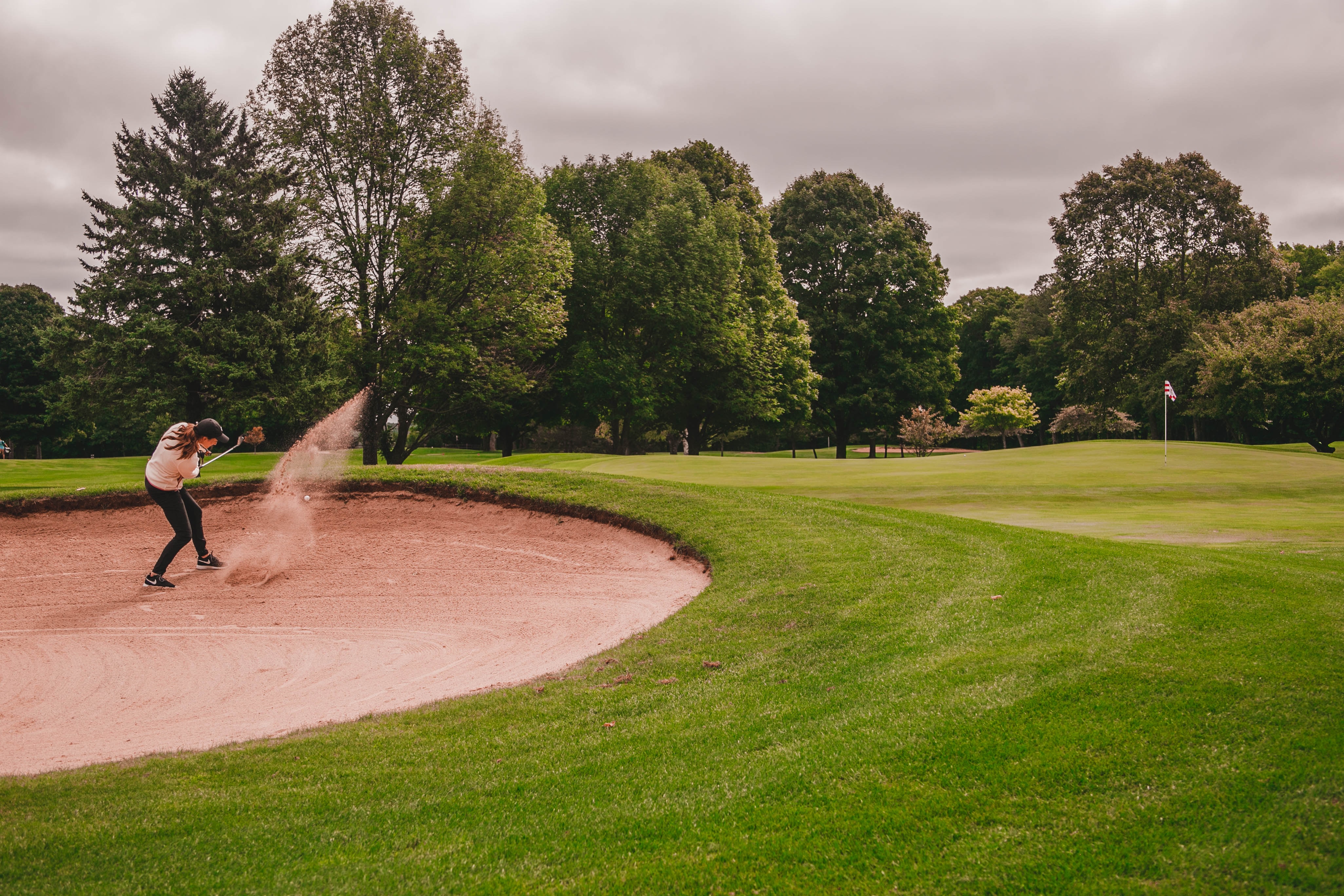
To celebrate the Jennis x LET Performance Institute partnership, the Jennis team gathered an intimate group of golfing pro’s together to talk about how to use your unique menstrual cycle data to support your training and give you the edge in tournaments. Revelatory, enlightening and game-changing, here’s an insight into the knowledge shared on the day…
What you'll learn:
- Why the menstrual cycle is an important data point for any athlete
- How to focus your strength training around your cycle for extra performance gains
- Hormone and performance hacks for when your period falls on a big event
- Why an individualised approach to hormone data can give you the edge
Jess Ennis-Hill: Hey everyone. We've obviously had quite a few conversations already, so it's really nice to actually see some of your faces.
I thought I'd start our conversation today by giving you a little bit of context into how we got to creation of the Jennis app and why we started looking at the menstrual cycle as a tool for improved performance across sport.
One thing that I found when I was a track-and-field athlete was that the discussion around hormones and my menstrual cycle, training and performance was kind of non existent.
There was always that understanding from athletes and chatter amongst friends that you know that you feel different at different times of the month and that it affects your training. But there was never that nurturing arm to explain why you feel like that. And, more importantly, how do you actively make changes to understand those hormone changes so that you can get more out of yourself.
Once I retired, I started to really understand and dig into the impact that your cycle has on your mood, motivation, recovery and all these different things. It was then that I met Dr. Emma Ross through a good friend of mine, Esme Matthews, who's also a physiologist.
Emma has worked at the English Institute of Sport for a number of years and, to make the Jennis app happen, we teamed up together. Our goal with Jennis was always to help more women become body literate and to help them understand how to harness their hormones in a really positive way.
Emma, why don’t you give an introduction and a bit of background on your work in the elite sport space…?
Dr Emma Ross: Thanks, Jess and hi everyone. Really nice to see you all. So, as Jess said, I was working as head of physiology at the English Institute of Sport, supporting Olympic and Paralympic programs and athletes and coaches.
A few years into that role, I kind of asked the awkward question about whether we were really supporting female athletes in the best way that we could.
Because we were one of the world's leading high-performance systems and we had some pretty successful female athletes - one of whom is sitting in front of you today – everyone kind of assumed that we were. But, actually, some of the things that were really important to fine-tuning a woman’s body, such as the menstrual cycle and its impact on how we feel physically and emotionally, was being completely overlooked.
As a result of that, I embarked on a period of work where we really tried to understand whether hormones and the menstrual cycle were important to performance and wellbeing and the recovery of athletes. And, the answer was… spoiler alert… yes.
If we can understand how those hormones rising and falling can influence us as individuals, then we can really use it to our advantage
From there, it was all about us trying to discover what we could do about it and how we could harness that for performance gains. As part of that, the key for me was to transform periods and the menstrual cycle from being a weakness to an opportunity.
By understanding our bodies and what they're doing each month and understanding how to lean into the good bits and how to manage or get rid of the bad bits, we suddenly created the opportunity to go further with training, performance, health and wellbeing. And that was really exciting for me to do in that elite arena.
Jess Ennis-Hill: As I've briefly said, me and Emma have teamed up to create the Jennis app. As part of that, we're trying to help women understand those small hacks that will help them really know how those hormonal fluctuations and changes on a monthly basis have an impact on how they feel, their mood and how they move their bodies in certain ways.
Over the next 15 minutes, we're going to talk through the four phases of your menstrual cycle and how the hormonal fluctuations you experience can have an impact on the way you train and also your preparation for events and golf tournaments.
To kick us off, Emma, as an athlete, what are the main benefits of training in line with the four phases of your menstrual cycle? And could you just give a breakdown of what those four phases are…?
Dr Emma Ross: Yeah, so, we’re all influenced by hormones all the time. When we get hungry, tired, happy – that's all driven by hormones.
Now, if we look at the menstrual cycle as a whole, we can see that there are four distinct times when our hormones are doing something different.

Image caption: The 4 phases of the cycle
As an example, at the beginning of our cycle, when we're having a period, both the hormones of the cycle – oestrogen and progesterone – are very low, so they're not really exerting much influence on us at all.
Then, moving into the second week of the cycle, oestrogen is rising. Oestrogen is amazing and has lots of benefits, so there are ways that we can capitalise on this from a training and recovery perspective.
Then, after the middle of our cycle, which is where ovulation happens, progesterone is released and this has some very specific and interesting influences on our body and our brain.
And, finally, towards the end of the cycle, we get the most symptoms, and that's because both of those hormones (oestrogen and progesterone) actually drop from being quite elevated to being back at baseline again.
In answer to your question, Jess, because those hormones have an influence on things like training adaptation, recovery, coordination, team dynamics, how you act socially, the relationships you have with your coach, how you communicate with your coach, motivation to move, motivation to train, if we can understand how those hormones rising and falling can influence us as individuals, then we can really use it to our advantage.
Jess Ennis-Hill: I totally agree. As women and as pro athletes, the menstrual cycle and the cycle day that you are on is a really important additional data point for us.
For example, when I was training professionally, I would have a five-week training block, then I'd have a testing week. Because that testing week would fall randomly across my menstrual cycle, sometimes I'd test well, sometimes I'd test terribly.
If I’d had access to that additional data point - the menstrual cycle and what was happening hormonally – it could have explained the way I performed…
I suppose that brings me to my next question about one particular phase, which is the follicular phase. As part of the app experience, we try to help athletes pinpoint their approach to that phase. Why would it be helpful for pro golfers to know when that phase is?
Dr Emma Ross: I think that the first point is context. As coaches and athletes, we're always looking for context.
You want to know why something is happening, when it's happening. Why did that go so well? Why didn't it go so well? Why are my hammies tight today? Why has my back suddenly flared up?
It won’t always be related to the menstrual cycle. But knowing where you are in your cycle and what that means for you is absolute gold in terms of context and it means you're not chasing another reason. You're not worried about an injury when actually it's hormones. So, it gives you really valuable context.

Image caption: Dr Emma Ross
In terms of that follicular phase, specifically. Because oestrogen is rising in that follicular phase (after our periods stop and up to the middle of our cycles), that has a knock-on effect on growth hormone. Now, growth hormone is really important for athletes. It's important for tissue repair, regeneration, growth and particularly things like muscle repair and growth.
Knowing this, the question researchers wanted answers to was: do we recover better when oestrogen is high? And, yet again, the answer is yes. The research has shown that our recovery is more robust during the follicular phase. This means that some women experience much less muscle soreness and some women experience a return to muscle function quicker in that follicular phase.
Just knowing this gives you the context of why sometimes you feel absolutely devastated after a training session, but that same training session doesn't feel so bad if you’re in your follicular phase.
This gives you valuable context of why you sometimes feel devastated after a training session, but that same session doesn't feel so bad when you’re in your follicular phase
This knowledge also led researchers to ask: ‘If oestrogen is actually anabolic (helping our body develop and grow), would it be a good stimulus for adaptation to strength training?’ So, if we did more strength training in this part of the cycle, would we get better results than if we spread strength training evenly across the whole cycle?
Now, there’s been about five or six studies in this area now - and these studies are quite hard to do, just because they involve training and the menstrual cycle. But the overriding consensus is that if you stack your strength training, or you compress resistance and strength work in the time of the cycle where your physiology is on your side, in terms of recovery and adaptation you might get better gains than if you were doing strength training that was regularly spaced across the whole cycle.
While there’s not going to be a one-size-fits-all approach to training, just knowing this gives you another tool in your toolbox to say, actually, could I play around with my training schedule? Could I try and do slightly more strength-and-power-training sessions in the follicular phase and then do slightly less and focus on something else in the second half of the cycle. And, if I do that, will my adaptations be better?
For something like golf, we know that club head speed is related to power and strength, which will translate into performance, so it’s a massive insight for women that could really play a part in giving you the edge.
Jess Ennis-Hill: I think having this hormonal intelligence gives you both physical benefits, but also huge psychological benefits as well.
If I go back to that reference of me testing in a particular week while I was training professionally. If that was my follicular week and I was hitting one-rep maxes in the gym and trying to max out, that gives me added strength going into the second block of my training because I know that I’ve peaked and I've kind of outperformed.
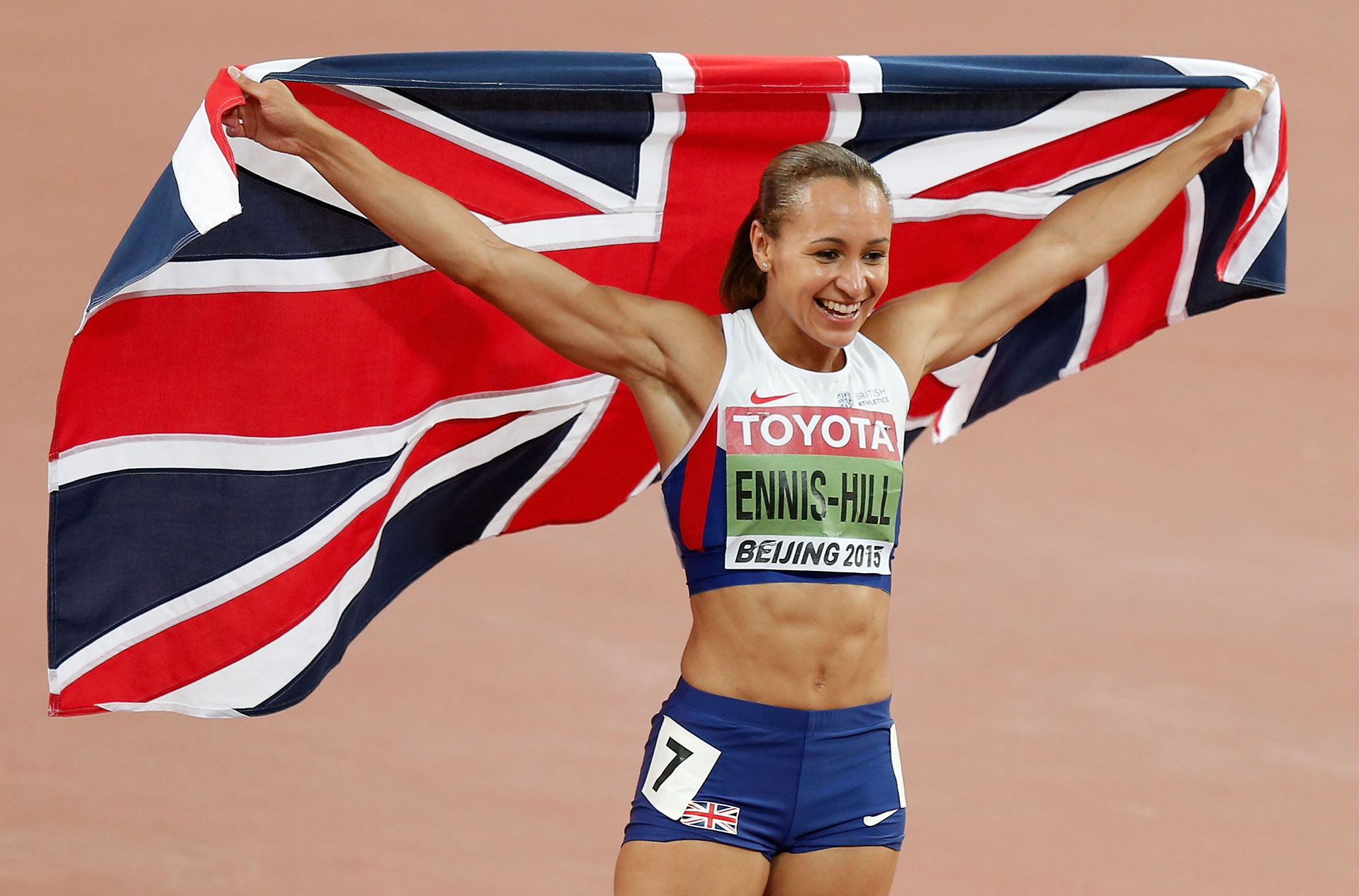
Image caption: Jess Ennis-Hill at the peak of her career
Shifting gears slightly, I think that one thing that's really important with professional athletes is that we can't dictate when our competitions are going to fall or when our tournament is going to happen. You know, we can’t change when the Olympics is going to fall…
Are there any strategies and recommendations from you personally that you can put in place to help you be in the best position, regardless of what phase or cycle day you are on.
Dr Emma Ross: If you know your cycle well enough to know that on the day that you’re competing you know that you’re going to be three days premenstrual and your breasts are really sore. And then, on the third day of the tournament, you know you’re going to be starting your period or you’re going to have period pain. That is actually really powerful, because you then have a choice about whether to do something about it and you can start implementing the thing that works for you to make sure you feel prepared, confident and on a level playing field.
In the Jennis app , we offer up lots of suggestions and actionable tips and tricks for different symptoms, such as pain, lethargy, cramps etc. For example, we know that pain can be improved by sending heat and blood flow to the area. And we know that certain yoga poses can fast-track that for you.
And so, for some athletes, it's about saying, right, what do I need to do before I go out and warm up to make sure I've got to the kind of starting point where I usually am when I'm outside of this phase. What is it that I need to do differently? Do I need to eat differently? Do I need to drink differently? Do I need to rest and recover differently?
A lot of understanding and working with your cycle - particularly at a pro level - is about anticipating what's going to come up in your cycle and then adapting your regime and routine to suit.
For example, at certain points in your cycle, you might need to be really good about fuelling because you know that you get dips in blood sugar and have cravings. To manage that, you might need to be really vigilant about how you eat and what you eat across those few days to manage your energy levels and manage your mood, for example.
Once you know that, you suddenly become in control and in the driving seat of your cycle.
Jess Ennis-Hill: I suppose the power there lies in having the ability to track and log symptoms so that you have a clear pattern of how you experience each phase and you have the data to give you confidence that I’ll probably feel like this, but I'm in control of it.
Dr Emma Ross: Exactly. Tracking is so important and, that's, again, what the app allows you to do is. You log what symptoms you're experiencing on any given day and it allows you to see whether there are any patterns.
The more you track, the more you get back and the more you can see. As an example, you might be wondering why your lower back keeps flaring up at certain times of the month.
By mapping it against your menstrual cycle, you might be able to see that it’s the same cycle day every month. Once you’ve got that information, your physio is no longer looking for a neuromuscular cause and you can work with it - whether that’s strapping, taping, a different warm up, heat etc.
Inputting that data and collecting it over time really helps you build a powerful individualised picture that you can use to your advantage.
We know that club-head speed is related to power and strength, which will translate into performance, so it could really play a part in giving you the edge
Jess Ennis-Hill: One of the lesser-known menstrual cycle phases is probably the luteal phase, just after ovulation. What do we know about our physiology as women that can actually really help us during this phase?
Dr Emma Ross: With the second half of the cycle, there are good and bad bits. Once progesterone comes along, it can be really helpful in reducing anxiety and overwhelm and calming our nervous system. It can also help to promote better sleep and some people fall asleep better or more quickly in this part of the cycle.
But, because progesterone gets into our brain networks, it can make some people feel slightly clumsy or slightly off. In a skill-based sport, such as golf, being just slightly off can have a big impact.
But, instead of accepting that you’re not going to be as accurate on those days, it's about finding out what you need to do to help you find that focus and sharpness.
I worked with a group of archers at the EIS and, for them, we found that a priming routine before any competitions or training really helped them to get their feel back quickly.
Finally, progesterone can affect gut motility - aka how quickly food is moving through your gut - and therefore cause bloating. For those athletes who are monitoring body weight, it can cause you to increase one or two kilograms at that time in a cycle.
If you're an athlete who’s being monitored and someone's weighing you on that day and you don't know that it’s progesterone that may be responsible for how your weight fluctuates, it can start conversations that are going in totally the wrong direction.
As you can see, the luteal phase is a really interesting one for figuring out how it's affecting you, and then identifying what you might be able to do about it.
Jess Ennis-Hill: The other big area is injury. What is the relationship between your menstrual cycle and the potential risk of injury?
Dr Emma Ross: We're learning more and more about the cycle and injury all the time. There are two points of the menstrual cycle where it’s believed that there may be an impact on injury, but more research needs to be done to really corroborate it.
Oestrogen is a hormone that affects the collagen in our joints, so it can influence the laxity of our joints. Because of this, it was thought that high oestrogen around ovulation maybe be a risk factor for injury.
Then there’s the time around our period, which is quite an inflammatory time in our body. inflammation could also be a risk factor for injury
We don't have enough data to say absolutely that these two points in the cycle are responsible. But we do have enough information to say the prevalence is slightly higher at those times of the cycle. So, it's going to be individual, and it's never going to be just because of your cycle.
However, knowing this, if you're someone who senses that they're getting tightness niggles pain, cyclically, that's really good information. Because, then, like you say, you can start to adjust warmups, adjust taping, strapping, massage, whatever it is you need.
It's not about saying, ‘oh, gosh, I can't move in anything but a straight line on these days’, but it's about asking the question - what do I need to do to protect myself a bit more on those days?
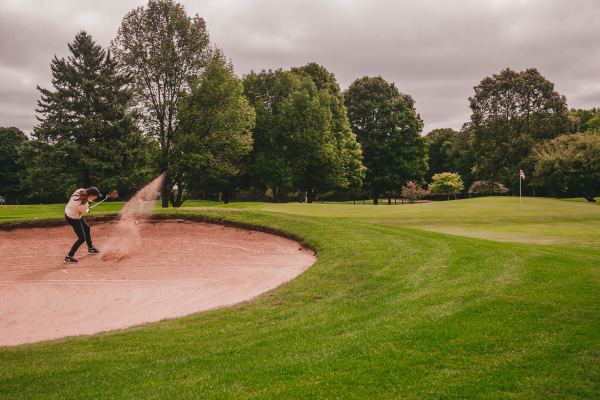 Cycle syncing
Cycle syncing Perimenopause
Perimenopause Perimenopause
Perimenopause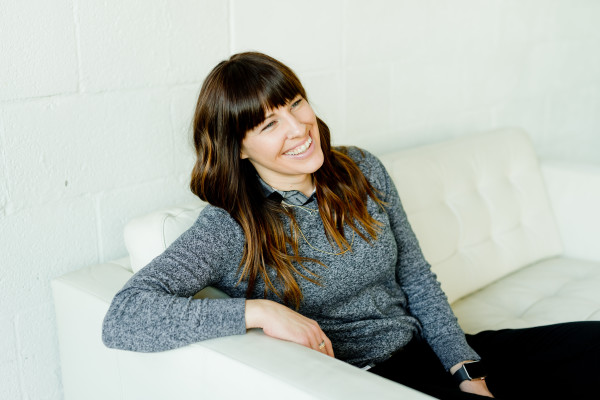 Perimenopause
PerimenopauseSign up to learn everything you need to know about CycleMapping, plus how you can live better and feel better through optimising your fitness to you.
This website uses cookies to ensure you get the best experience on our website. Learn more
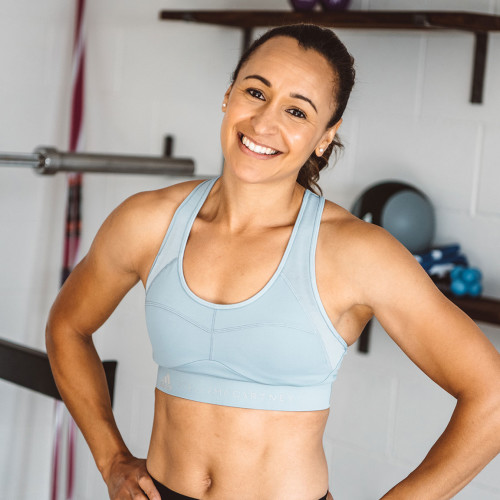
Sign up for the very latest news on women's fitness, health and hormones, plus be the first to receive exclusive offers and extras